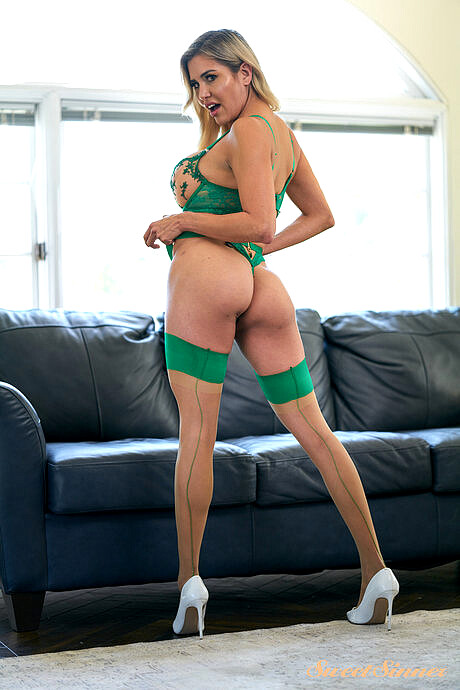 One of the vital destructive manifestations of racism is the erasure of the cultures and experiences of individuals of shade and the presumption that whiteness is dominant nude ladies having sex and normative. In the United States, the experiences of black individuals have been the particular targets of such erasures. Within the words of one black feminist critique, however, “all the ladies are white.” In keeping with American racial hierarchies, white women’s experiences offered the inspiration for feminist thought; the issue of racism was presumed to be subsumed inside the issue of patriarchy. In the aftermath of the civil rights motion, white women activists, including some who participated in the civil rights movement, sparked a feminist movement that challenged patriarchy and generated new modes of interested by gender and women’s expertise.
One of the vital destructive manifestations of racism is the erasure of the cultures and experiences of individuals of shade and the presumption that whiteness is dominant nude ladies having sex and normative. In the United States, the experiences of black individuals have been the particular targets of such erasures. Within the words of one black feminist critique, however, “all the ladies are white.” In keeping with American racial hierarchies, white women’s experiences offered the inspiration for feminist thought; the issue of racism was presumed to be subsumed inside the issue of patriarchy. In the aftermath of the civil rights motion, white women activists, including some who participated in the civil rights movement, sparked a feminist movement that challenged patriarchy and generated new modes of interested by gender and women’s expertise.
Where To Meet Beautiful Black Woman
A brand new Phrase FROM ALICE WALKER
The time period womanist was created in 1981 by novelist, poet, essayist, critic, and feminist Alice Walker. The time period provided the foundations for a principle of black women’s historical past and expertise that highlighted their vital roles in community and society. Closely appropriated by black women scholars in religious studies, ethics, and theology, womanist became an important tool for approaching black women’s perspectives and experiences from a standpoint that was self-defined and that resisted the cultural erasure that was and still is such a destructive element of American racism.
How To Love A Black Woman
Crucial of the ways during which white feminists used their own experiences to interpret black women’s experiences, Walker first used the term in a evaluation of Jean Humez’s e-book, Gifts of Energy: The Writings of Rebecca Jackson, Black Visionary, Shaker Eldress. As a result of Jackson traveled with a girl accomplice, just like many black ladies missionaries and evangelists of the nineteenth and early twentieth centuries, Humez chose to call Jackson’s life-style “lesbian.” On changing into a Shaker, Rebecca Cox Jackson left her husband and assumed a life of celibacy. Shakers built a religious movement that required its members to be celibate.
Walker objected to Humez’s imposition of a term that was not grounded in Jackson’s definition of the state of affairs. 81). Inside the essay, Walker laid the foundations of her definition by rejecting a term for women’s culture based on an island (Lesbos) and insisting that black women, regardless of how they had been erotically bound, would choose a time period “consistent with black cultural values” that “affirmed connectedness to your entire neighborhood and the world, somewhat than separation, regardless of who labored and slept with whom” (pp. Walker questioned “a non-black scholar’s try to label one thing lesbian that the black lady in query has not” (p. 82-83).
 A concept GROUNDED IN BLACK WOMEN’s Experience
A concept GROUNDED IN BLACK WOMEN’s Experience
How To Make Love To A Black Woman
Humez’s choice of labels was an example of the methods white feminists perpetuated an mental colonialism. For Walker, the invention of the time period was an act of empowerment and resistance, thus addressing and difficult the dehumanizing erasure that may be a perpetual problem in a racist society. This intellectual colonialism reflected the differences in power and privilege that characterized the relationships between black and white girls. The time period womanist was Walker’s try to supply a phrase, an idea, and a mind-set that allowed black ladies to name and label their own experiences.
In 1983, Walker supplied an elaborate, dictionary-type definition of the term in her assortment of essays, Seeking Our Mothers’s Gardens: Womanist Prose (pp. xi- xii). This book of essays, which included her evaluate of Gifts of Energy, offered a extra in depth view of her understandings of the experiences and historical past of black ladies as a distinctive dimension of human expertise and a strong cultural pressure. Her definition will be viewed as a philosophical overview of her work in novels, short stories, essays, and poetry.
What Is An Ebony Woman
First, Walker defines a “womanist” as a “black feminist or feminist of color.” Clearly Walker includes the liberationist challenge of feminism in her definition. Nevertheless, that liberationist undertaking, as her definition goes on to show, needs to be grounded within the historical past and tradition of the black women’s expertise.
Walker provides the time period an etymology rooted within the African American people time period womanish, a time period African American mothers usually used to criticize their daughters’ habits. xi). “Womanish” meant that girls have been performing too previous and interesting in habits that might be sexually dangerous and invite consideration that was dangerous. Walker additionally noticed the participation of younger people in civil rights demonstrations and was conscious of the huge resistance of youngsters in such locations as Birmingham and Selma, Alabama. In cost. Serious” (p. Walker, nevertheless, subverts “womanish” and makes use of it to focus on the grownup obligations that black ladies usually assumed so as to help their households and liberate their communities. Jackson misplaced her mom at age thirteen and helped elevate her brothers and sisters along with one among her brother’s kids. Walker describes the term “womanish” as an opposite of “girlish,” subtly hinting that the pressures of accelerated growth are details of black female life not apprehended by white women’s experiences. “Womanist” implied a need to be “Responsible. As a civil rights worker in Mississippi Freedom Faculties, Walker taught girls whose childhoods ended early, limiting their educations.
Ebony Woman Pornstars
A womanist, in accordance with Walker, loves other girls and prefers women’s culture, a very antipatriarchal orientation. xi). Walker subverts the antagonisms of class and color, often overemphasized by black nationalists, as variations amongst relations. Walker evokes very particular black girls function models corresponding to Mary Church Terrell, a clubwoman whose politics transcended coloration and class, and Harriet Tubman, famous for her exploits on the Underground Railroad and Civil Battle battlefields. A womanist also evinces a determination to act authoritatively on behalf of her community. Nonetheless, womanists evince a dedication “to survival and wholeness of whole individuals, male and feminine.” A womanist is “not a separatist, except periodically, for health” and, as a “universalist,” she transcends sources of division, especially those dictated by color and class (p.
Thick Ebony Woman
 Lastly, Walker offers a description of black women’s culture that is at odds with some major emphases in white tradition. Her definition features a love of “food and roundness” that stands in stark distinction to the physique pictures and gender norms of the dominant tradition, a tradition that celebrates pathologically thin white women and socially produces eating disorders. Walker emphasizes self-love, “Loves herself, regardless,” a direct challenge to the selfhatred that is a consequence of racism (p. Walker’s key word is “love,” and she links it to spirituality, artistic expression, and political activism. xi).
Lastly, Walker offers a description of black women’s culture that is at odds with some major emphases in white tradition. Her definition features a love of “food and roundness” that stands in stark distinction to the physique pictures and gender norms of the dominant tradition, a tradition that celebrates pathologically thin white women and socially produces eating disorders. Walker emphasizes self-love, “Loves herself, regardless,” a direct challenge to the selfhatred that is a consequence of racism (p. Walker’s key word is “love,” and she links it to spirituality, artistic expression, and political activism. xi).
FROM WOMANIST TO WOMANISM
Ebony Woman Onlyfans
Although womanist has not displaced the phrases feminist and feminism, the womanist concept resonated with many black ladies as a grounded and culturally particular software to research black women’s experiences in neighborhood and society. Katie Geneva Cannon, author of Black Womanist Ethics (1988), Jacqueline Grant, author of White Women’s Christ and Black Women’s Jesus: Feminist Christology and Womanist Response (1989), and Renita Weems, author of Just a Sister Away: A Womanist Vision of Women’s Relationships in the Bible (1988), utilized Walker’s perspective to explore the relationship of African American women’s experiences to the construction of ethics, to theological and christological ideas, and to the meaning and importance of biblical stories about girls. Walker’s concept was notably helpful for black girls in religious research and theology, the place the confrontation between black and white theologies, within the context of liberation theologies, was notably vibrant and direct. In normative disciplines reminiscent of ethics, theology, and biblical research, the idealism and values in Walker’s thought have been particularly useful. Their work laid a basis for an explosion of womanist evaluation in religious research and elsewhere.
Ebony Woman Who Want White Men
Students utilizing womanist evaluation challenged not solely black male theologians to increase their evaluation of gender but also pushed white female theologians to develop their evaluation of race. In a “roundtable” amongst feminist students in 1989, Cheryl Sanders questioned the usefulness of Walker’s concept, as a result of she gave “scant consideration to the sacred.” The factors and counterpoints in that roundtable emphasized the huge-ranging invitation to analysis and criticism contained in Walker’s concept. Walker’s concept also inspired other culturally specific forms of analysis akin to “Mujerista theology” among Latina theologians.
Beautiful Ebony Woman Nude
Although bell hooks in Speaking Again: Pondering Feminist, Pondering Black (1989) steered that some ladies use the time period “womanist” to keep away from asserting they're “feminist,” the difficulty is more complex. Walker’s definition of womanist and her larger body of writings immediately have interaction all of these points. She recognized work, rape, magnificence, and gender separatism as sources of battle between black and white feminists. For a lot of black girls who had been self-identified as feminists, the emphases of late-twentieth-century white feminists did not match their own concerns and experiences. Feminist ethicist Barbara Andolsen supplied an evaluation of racism within the feminist motion. In Daughters of Jefferson, Daughters of Bootblacks: Racism in American Feminism (1986), she pointed to areas of disagreement between black ladies who recognized particularly as black feminists and white feminists.
 Though Walker did not indicate a need to create a womanist motion, the term womanism was a natural extension of womanist. Womanism is recognized as both the activism in keeping with the ideals embedded in Walker’s definition and the womanist scholarly traditions which have grown up in various disciplines, especially religious research. Walker’s writings and ideas, however, emphasized black women’s creativity, enterprise, and neighborhood commitment, and “womanist” links these particularly to feminism. Womanism is a paradigm shift whereby Black women not look to others for his or her liberation” (p. “Womanism is,” as Stacey Floyd Thomas (2006) factors out, “revolutionary. 1).
Though Walker did not indicate a need to create a womanist motion, the term womanism was a natural extension of womanist. Womanism is recognized as both the activism in keeping with the ideals embedded in Walker’s definition and the womanist scholarly traditions which have grown up in various disciplines, especially religious research. Walker’s writings and ideas, however, emphasized black women’s creativity, enterprise, and neighborhood commitment, and “womanist” links these particularly to feminism. Womanism is a paradigm shift whereby Black women not look to others for his or her liberation” (p. “Womanism is,” as Stacey Floyd Thomas (2006) factors out, “revolutionary. 1).
Who Is The Most Beautiful Black Woman
SEE Also African Diaspora; Black Consciousness; Black Feminism in Brazil; Black Feminism in the United Kingdom; Black Feminism within the United States; Feminism and Race; Pan-Africanism.
Best Black Woman Onlyfans
BIBLIOGRAPHY
Want a Thriving Business? Deal with Beautiful Ebony Woman Nude!
Andolsen, Barbara Hilkert. 1986. “Daughters of Jefferson, Daughters of Bootblacks”: Racism and American Feminism. Macon, GA: Mercer University Press.
What's Really Happening With Beautiful Ebony Woman Nude
Cannon, Katie Geneva. 1988. Black Womanist Ethics. Atlanta, GA: Scholars Press.
Do You Make These Simple Mistakes In Beautiful Ebony Woman Nude?
Floyd-Thomas, Stacey, ed. 2006. Deeper Shades of Purple: Womanism in Religion and Society. New York: New York University Press.
Grant, Jacquelyn. 1989. White Women’s Christ and Black Women’s Jesus: Feminist Christology and Womanist Response. Atlanta, GA: Scholars Press.
hooks, bell. 1989. Talking Again: Pondering Feminist, Thinking Black. Boston: South End Press.
Are You Good At Beautiful Ebony Woman Nude? Here is A fast Quiz To find Out
Mitchem, Stephanie. 2002. Introducing Womanist Theology. Maryknoll, NY: Orbis Books.
Whenever you Ask Individuals About Beautiful Ebony Woman Nude This is What They Answer
Sanders, Cheryl. 1989. “Roundtable Dialogue: Christian Ethics and Theology in Womanist Perspective.” Journal of Feminist Research in Religion 5 (2): 83-112.
Walker, Alice. 1983. In search of Our Mothers’s Gardens: Womanist Prose. San Diego, CA: Harcourt Brace Jovanovich.
Weems, Renita J. 1988. Just a Sister Away: A Womanist Vision of Women’s Relationships within the Bible. San Diego, CA: LuraMedia.